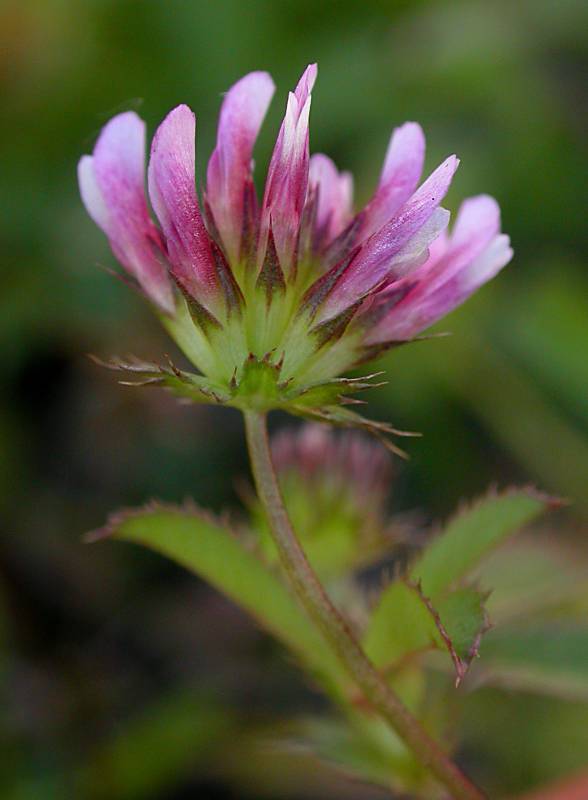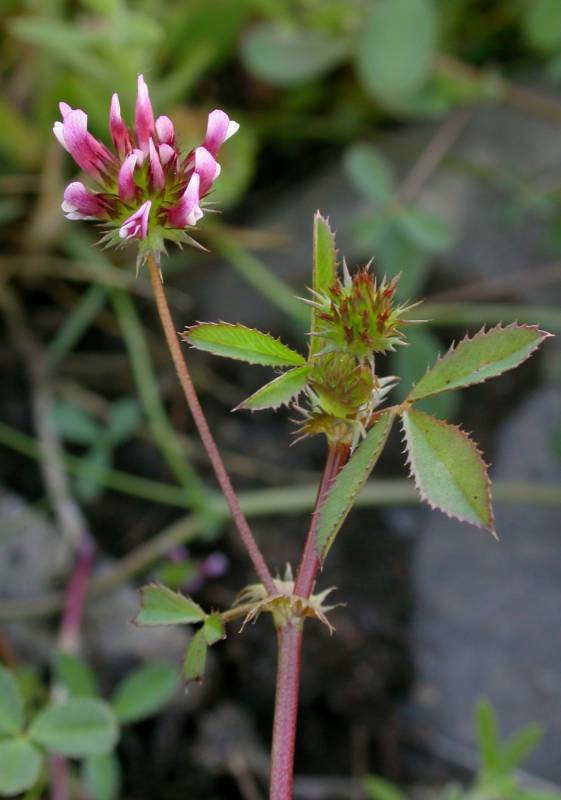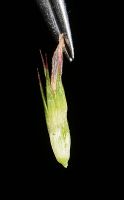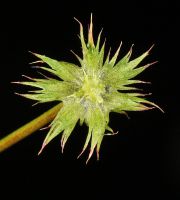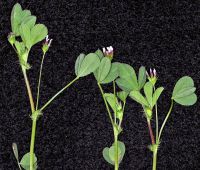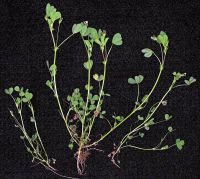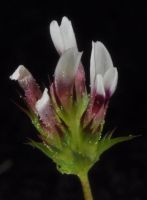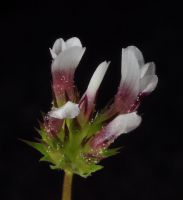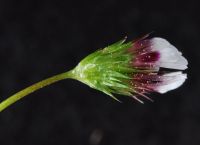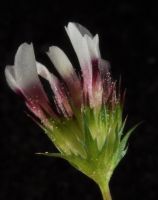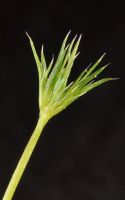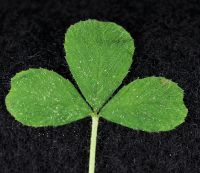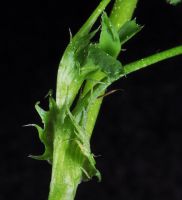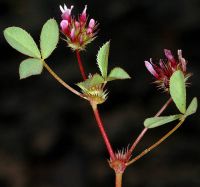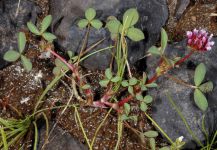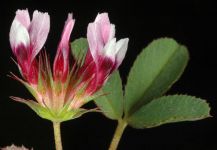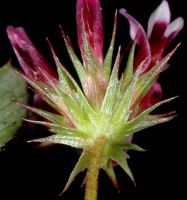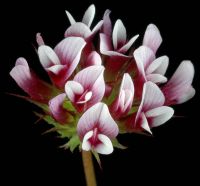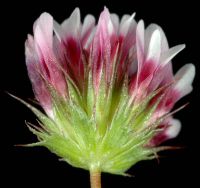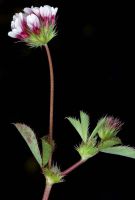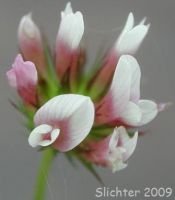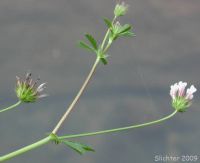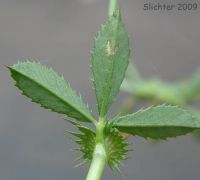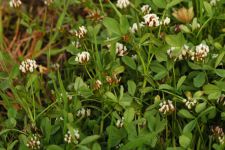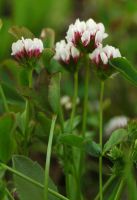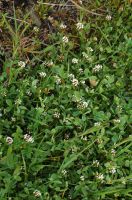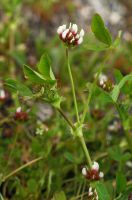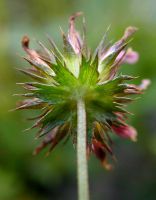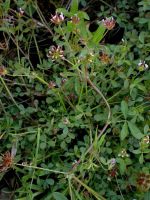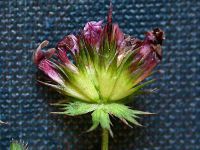Distribution: Widely distributed throughout much of Washington; Alaska south to California, east to Montana, Wyoming, Utah, and Arizona.
Habitat: Dry, sandy soil to moist meadows.
Flowers: April-July
Origin: Native
Growth Duration: Annual
Conservation Status: Not of concern
Pollination: Bumblebees, bees, butterflies, flies
Glabrous annual, the 1-several stems 1-6 dm. long, prostrate to erect.
Leaves trifoliate, petiolate; leaflets obovate to elliptic oblanceolate, 5-20 mm. long, the margins sharply serrate, the serrations with needle-like tips; stipules ovate, deeply lacerate.
Inflorescence of 3- to 40-flowered, involucrate heads 1-2 cm. broad on long axillary peduncles; involucres flaring and saucer-shaped, irregularly lobed and lacerate about half their length; calyx tube narrowly bell-shaped, 10-25 veined, the 5 teeth much longer than the tube, narrow and bristle-tipped; corolla pea-like, 5-20 mm. long, slightly longer than the calyx, purplish, often white-tipped, aging to purplish-brown.
Pod 1-2 seeded, usually rupturing the calyx.
Publication: Fl. N. Amer. 1(2): 317. 1838.
Trifolium geminiflorum Greene
Trifolium melananthum Hook. & Arn.
Trifolium polyodon Greene
Trifolium trilobatum Jeps.
PNW Herbaria: Specimen records of Trifolium variegatum in the Consortium of Pacific Northwest Herbaria database
WA Flora Checklist: Trifolium variegatum checklist entry
OregonFlora: Trifolium variegatum information
E-Flora BC: Trifolium variegatum atlas page
CalPhotos: Trifolium variegatum photos

